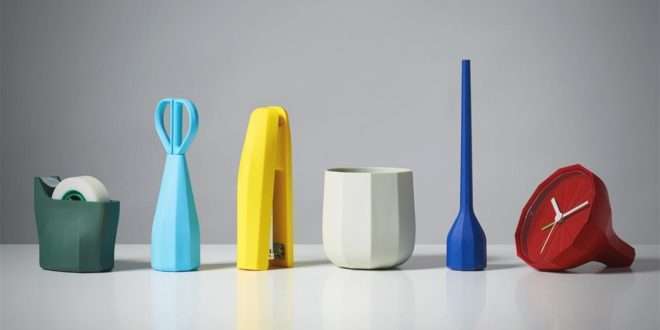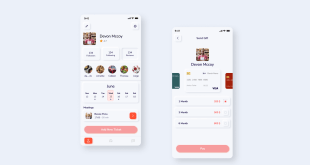In the fast-paced digital age, user experience (UX) has become a pivotal factor in the success of any online venture. While functionality and efficiency play crucial roles, the true power lies in connecting with users on an emotional level through thoughtful design. This blog explores the impact of emotional design and how it shapes captivating user experiences that drive lasting impressions.
Understanding Emotional Design
What is Emotional Design?
Emotional design refers to the intentional incorporation of emotions into the user experience. It goes beyond mere aesthetics and functionality to evoke feelings of joy, excitement, trust, or even nostalgia. When users form an emotional connection with a product or website, they are more likely to engage with it, return, and share their experience with others.
The Psychology Behind Emotional Design
Human emotions and decision-making are deeply intertwined. The limbic system, responsible for emotions, plays a vital role in shaping our preferences and choices. By tapping into these emotional triggers, designers can create experiences that resonate with users, fostering brand loyalty and advocacy.
Key Elements of Emotional Design
Visual Storytelling: Eliciting Emotions through Imagery
Compelling visual elements, such as images, illustrations, and videos, can convey powerful messages. By telling a visual story, designers can elicit emotions that align with the brand’s identity and values, forging a deeper connection with users.
Color Psychology: Picking the Right Palette
Colors evoke emotions, and their strategic use in design can greatly influence user perceptions. Warm colors like red and orange can create a sense of urgency or excitement, while cool colors like blue and green can instill a feeling of calmness and trust.
Microinteractions: Delighting Users with Small Gestures
Microinteractions, such as animated feedback or playful loading screens, add a touch of delight to the user experience. These small gestures can create a sense of personalization and surprise, leaving users with a positive impression.
Empathy-driven Design: Understanding User Needs
Designers must empathize with users to create experiences that truly resonate. By understanding their pain points, desires, and motivations, designers can craft interfaces that cater to users’ emotional requirements, making them feel valued and understood.
Implementing Emotional Design in User Interface
Storyboarding: Creating Scenarios for Engagement
Storyboarding is a valuable technique that enables designers to visualize how users will interact with the interface. By mapping out scenarios, designers can anticipate emotional responses and fine-tune the design to evoke the desired feelings.
Gestalt Principles: Fostering Harmony and Unity
The Gestalt principles guide designers in organizing visual elements to create a harmonious whole. This approach ensures that users can easily perceive and connect with the interface, enhancing their emotional experience.
Consistency: Building Trust and Familiarity
Consistency in design instills a sense of reliability and trust. When users encounter familiar elements throughout their journey, they feel more at ease and confident in their interactions.
Tools and Resources for Emotional Design
User Interface Design Software
There are various user interface design software options available, catering to designers of all skill levels. Some popular choices include Adobe XD, Sketch, Figma, and InVision. Each platform offers unique features to bring emotional design concepts to life.
User Interface Design Process
The user interface design process involves several stages, from research and wireframing to prototyping and testing. Emphasizing user feedback and iterative design can lead to emotionally impactful interfaces.
User Interface Design Principles
Several design principles guide the creation of emotionally engaging interfaces, such as simplicity, clarity, and consistency. Abiding by these principles helps designers achieve intuitive and emotionally resonant user experiences.
Final Words
Crafting engaging user experiences through emotional design is a powerful strategy to leave a lasting impression on users. By leveraging visual storytelling, color psychology, microinteractions, and empathy-driven design, designers can forge deeper connections with their audience. Embrace emotional design as a potent tool to unlock the full potential of your user experiences and set your brand apart in the competitive digital landscape.
Commonly Asked Questions
Q1: How does emotional design impact user behavior?
Emotional design influences user behavior by creating a deeper connection with products and websites. When users feel emotionally engaged, they are more likely to stay longer, return, and advocate for the brand.
Q2: Can emotional design enhance brand loyalty?
Absolutely! Emotional design fosters positive associations with a brand, leading to increased loyalty. When users have positive emotional experiences, they are more inclined to become brand advocates.
Q3: What are some common color choices to evoke specific emotions?
Warm colors like red and orange can evoke excitement and urgency, while cool colors like blue and green instill a sense of calmness and trust. However, the emotional impact of colors can vary depending on cultural and individual preferences.
Q4: How can empathy-driven design benefit product development?
Empathy-driven design puts users at the center of the development process. By understanding user needs, pain points, and aspirations, designers can create products that resonate deeply with the target audience.
Q5: What are some best practices for incorporating microinteractions?
Microinteractions should be subtle, purposeful, and aligned with the overall design theme. They should enhance the user experience without overwhelming or distracting users. Consider using microinteractions for feedback, loading animations, or personalized touches.
 webfily
webfily



